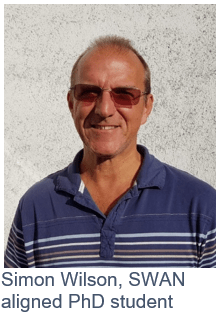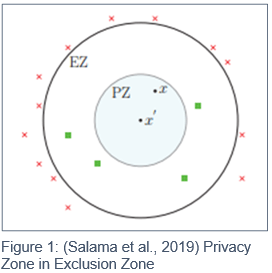The SWAN Prosperity Partnership has just completed the first full year of the project’s 5-year lifespan. To celebrate this, we are going to be taking the opportunity to highlight members of our research team, both in the University of Bristol, and within our partner institutions.
This new blog series will take a deeper dive into the recent work of our postdoctoral researchers, our aligned PhD students, and research team members from across the Partnership.
First up in this new series, we sat down with one of our aligned PhD students from the EPSRC Centre for Doctoral Training in Communications, Simon Wilson, to ask him a bit more about his work on Dynamic Spectrum Access (DSA) and how it relates to the SWAN programme of research.
 What is the key focus of your PhD and how does this relate to SWAN?
What is the key focus of your PhD and how does this relate to SWAN?
I’m looking at four distinct areas of the Dynamic Spectrum Access (DSA) ecosystem: sharing protocols, the identification of unused spectrum, security, and economic modelling and cost-benefits. This last area is paramount when assessing the drivers, business case and key parameters for the introduction of DSA, but the first three areas are necessary to understand the modelling constraints and these all relate to SWAN. My work focuses on an assessment of the potential benefits of secure DSA from a mobile network operator’s (MNO’s) perspective.
Can you give us a brief overview of the work you have been doing recently?
I have been working on the framework for an economic benefits model and most recently have begun to explore Monte Carlo analyses of coexistence in C-Band spectrum (around 4 GHz) in the UK.
What will be the key outputs of this particular piece of work?
The key outputs from this analysis will be a set of input parameters to my model that denotes the extent of potentially available spectrum for secondary users (SUs) to access. The geographic extent of this availability will influence the use cases that are potentially beneficial to MNOs (for example, depending on the proportions in urban and rural geotypes) and this will vary by frequency depending on the type, number and location of primary users present.
What are the next steps for this section of your research?
I need to identify the primary users (PUs), characterise their systems and interference protection requirements, define SU system parameters and model the coexistence between these services. I will then investigate the effect of varying protection ratios to identify the potential for SUs to gain benefit from offering to trade (for example, money against protection margin) with PUs.
Can you tell us of one recent publication in the world of communications systems and networks research that has interested you?
Salama et al introduced, at the 2018 IEEE International Symposium on Dynamic Spectrum Access Networks (DySPAN 2018)1 a privacy zone (PZ, Figure 1), smaller than a conventional exclusion zone (EZ), within which a PU’s location is indistinguishable in order to preserve privacy of the PU to some extent. The region between the PZ and EZ boundaries can be viewed as a buffer zone that prevents interference to PUs in the worst case.
indistinguishable in order to preserve privacy of the PU to some extent. The region between the PZ and EZ boundaries can be viewed as a buffer zone that prevents interference to PUs in the worst case.
They defined interference, privacy and the resulting spectrum utility as:
- Interference: the maximum aggregated interference experienced by any location in the PZ
- Privacy: the conditional entropy – the uncertainty about the location of the PU given knowledge about the PZ
- Utility: the number of SUs that are granted access (allowed to transmit)
A probabilistic approach was taken in this study to avoid worst case scenarios. This is also the approach taken in modern spectrum management; Monte-Carlo analyses are used when studying coexistence between wireless systems operating in overlapping or adjacent frequency bands. Results from a higher number of trials will be fairer, leading to better overall spectrum efficiency in shared systems.
But does this mean it will lead to a more efficient economic output?
1 SALAMA, A. M., LI, M., LAZOS, L., XIAO, Y. & KRUNZ, M. On the Privacy and Utility Tradeoff in Database-Assisted Dynamic Spectrum Access. 2019.
Is there anything else you would like to tell us?
I’ve been in London since the first lockdown last March and am very much looking forward to getting back to Bristol!
SWAN Prosperity Partnership
Interested in reading more about SWAN and our programme of research? Take a look at our website for more information or sign up to our newsletter for regular updates on SWAN activities and opportunities to get involved.
